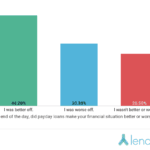Job Growth is More than Digital Job Growth: Why Both Online and Offline Enterprises Deserve Investor Support
The siren song of the tech-driven economy can be hard to resist. After all, the developments humanity has made in recent years are astounding. To take one ubiquitous example: Smartphones can now have up to 1 TB of storage while fitting easily in our pockets, while in the 1990s, PCs the size of a suitcase typically offered just a gigabyte of storage. And of course, those smartphones connect us all to perhaps the most transformative technological development of our time: the internet.
In some ways, the world is smaller than ever, truly becoming a connected global village. But “more connected” doesn’t mean “completely connected,” and the real world remains full of the same “offline” challenges that have impacted our daily lives for millennia. Romanticizing the extent of tech’s reach and limiting our focus to the digital realm often sacrifices growth and development outside of the tech economy, leaving entrepreneurs who aren’t connected behind and excluding enterprises that can have a major impact on job creation in emerging markets and marginalized communities. When we block out the siren’s song, how can we leverage the power of the digital economy to give non-digital entrepreneurs the first break they need, meeting people where they are — with or without technology?
The Need for Both Online and Offline Opportunity
As of 2021, 2.9 billion people remain offline globally — 96% of whom live in the developing world — which amounts to around 37% of the world’s population. Not even the regions with the highest internet penetration, like northern Europe, are completely online. In Africa specifically, the digital divide is even wider: Only 33% of the population was using the internet as of 2021, meaning an estimated 871 million people are not realizing the benefits of digital connectivity on the continent. In East Africa, the internet penetration rate is estimated at 23.9%, and mobile internet access, while growing rapidly, is not enough to completely bridge this divide. The GSMA has found that people living in rural areas across low- and middle-income countries in sub-Saharan Africa are 54% less likely to use mobile internet than their urban counterparts.
At the Leila Janah Foundation we aim to help create more employment opportunities for marginalized and rural communities by supporting microentrepreneurs, and our anchor program, the Give Work Challenge (GWC), primarily lives online. The program is delivered in the form of a pitch competition, with versions open to both established enterprises and new businesses founded by low-income entrepreneurs in Kenya and Uganda, the countries where the Foundation operates. The entrepreneurs who win this pitch competition receive cash grants to help expand their businesses, hire staff, and purchase raw materials and equipment, along with ongoing support to help them overcome the challenges of growing their business, including expert mentorship.
In running the Challenge, we’ve noted a disparity between startups that can access funding through digital programs like the GWC, and those that are excluded from this sort of opportunity due to their lack of internet access. And we’ve realized that we can only successfully address this disparity by shedding our preconceived ideas of accessibility. To that end, we’ve had to become deeply familiar with the often-rural communities that have no access to digital grant opportunities — the kind of communities that would never hear about the GWC, but that still have businesses with potential to make great impact at scale.
We’ve navigated some key challenges in attempting to reach these offline entrepreneurs. Our founder Leila Janah strongly believed that talent is equally distributed, but opportunity is not. So our focus for 2023 was to close this opportunity and digital access gap, meeting potential entrepreneurs in rural areas at the grassroots level — something we aimed to accomplish in western Kenya through our new Woman Founder Awards program. Among the women who met the program’s application deadline, 90% had learned about it through word of mouth. But we had droves of women waiting at the door after the deadline — potential enterprises that would not be included in this inaugural cycle because word did not get to them fast enough. This experience served as a strong reminder of the realities faced by communities that are offline, reminding us to go even deeper in our next program intake.
These learnings also informed how we ran the program. The 12 women who received the first round of Woman Founder Awards were nothing short of amazing: Even before receiving funding, 50% of them started businesses three months into the training program, and the first cohort has gone on to create jobs and impact over 200 members of their communities in just under a year — without necessarily being online. But the vast majority of these women had no prior business knowledge and were worried they wouldn’t be able to come up with an idea, let alone actually start a business. Consequently, we designed a more aggressive version of the program we use in the Give Work Challenge, which provided the women with more hand-holding and coaching to give them additional confidence, and we plan to use this program in future iterations of these awards.
Defining Success Among Digital and Non-Digital Businesses
However, there’s a key difference between digital businesses and non-digital businesses — a difference that also exists between enterprises in emerging and developed markets: Success does not look the same. Most tech-focused donors and investors in developed markets look for businesses that have the potential for “hockey-stick” growth, and entrepreneurs constantly feel pressure to show that potential in order to have any chance to be noticed. Ultimately, this puts them in a Catch-22: Investors won’t fund enterprises if they’re not big enough, but enterprises need that funding in order to get big enough to be noticed. Only a relatively small number of these businesses are fortunate enough to catch the eye of the investors that can power their growth.
Microenterprises in remote areas of emerging markets will seldom get noticed by these international investors — and without an online presence, the likelihood that they’ll receive investment even from smaller local investors is low. But that doesn’t mean these businesses lack impact, or that they’re unworthy of investor support. For the microentrepreneur who has created jobs for five people in their local community, their business is already successful, even if it lacks the potential for massive scale. Some of the companies we’ve supported do have that potential for hockey stick growth in a short period, but many don’t. Yet the fact remains that, in Africa, both scalable and non-scalable businesses are necessary to grow the economy. Both are necessary for job creation — particularly for jobs that offer a livable wage in communities where the lack of formal job opportunities leaves people with no choice but to work in the informal sector.
Furthermore, fundraising success can also look different between different countries and cultures. In the U.S., for example, the average seed round is hovering around $3.6 million. By comparison, a GWC winner in Kenya or Uganda is awarded $10,000. That may seem small and unglamorous from an American perspective. But to the entrepreneurs we’re funding, it’s a huge amount of money and a firm foundation that can be built on: Kenya’s gross national income per capita is $2,170; in Uganda, it’s $930. Sometimes, it’s not just about throwing a massive amount of money at entrepreneurs — it’s about thinking on the right scale and understanding local needs. Working with smaller amounts of capital also allows this money to go further, leading to smarter, more judicious spending. And by working with non-digital entrepreneurs, without the expectation that they will become a big enterprise overnight — or even that they will develop a digital presence — we’ve been able to reach businesses whose potential has been overlooked by other, more traditional investors.
Through this work, we’ve learned time and again that the world works best when it is in balance — whether we’re talking about the economy, the environment or even personal relationships. Not every company can or should be a digital titan, as alluring as that idea may seem. Sometimes, all a non-digital entrepreneur needs is the tiniest break or stroke of luck to succeed. To give them that break, we need to think on the right scale and remember to meet people where they are, not where we wish or expect them to be. When we balance big breaks with smaller ones, we can work towards building a better future for businesses in both emerging and developed economies — a future where both digital and non-digital companies can thrive.
Liliosa Mbirimi is the Program Director of the Leila Janah Foundation.
Photo courtesy of Marcel Crozet / International Labour Organization.
- Categories
- Investing, Technology



